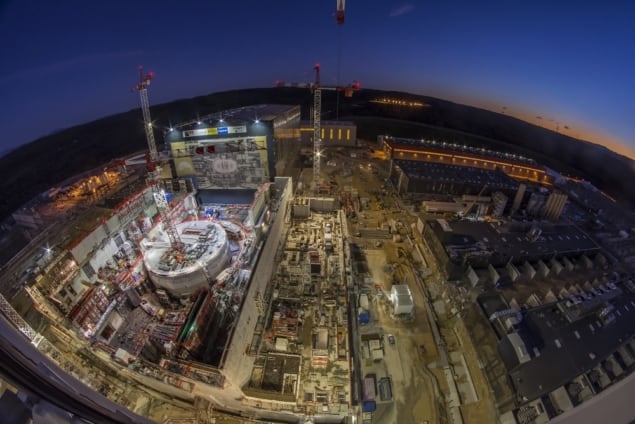
The US should begin its own R&D programme into a compact pilot fusion plant that would produce electricity at the lowest possible capital cost. That is according to a report by the National Academies of Sciences, Engineering, and Medicine (NASEM), which has also recommended that the country remain in the international ITER fusion project that is currently under construction in Cadarache, France.
Expected to cost tens of billions of euros, the ITER fusion reactor aims to show that it is technically feasible to get usable amounts of energy from a controlled fusion reaction. The project has, however, been hit by numerous delays and the first plasma is not expected until at least 2025 at the earliest. The first experiments using a “burning” fusion fuel – a mixture of deuterium and tritium – will not begin until the mid 2030s with the facility aiming to generate 500 MW of power. ITER’s rapidly increasing budget has also led to frequent – although so far unsuccessful — efforts by the US Senate to withdraw from it.
The sword of Damocles
The NASEM report, issued in late December, builds on an interim version published in early 2018 that warned of the consequences of leaving ITER. The latest version states that ITER is the “only existing project expected to create and study a burning plasma [being] the next critical step in the development of fusion energy”. Yet the report also indicates that the US needs its own complementary fusion programme. Without it, says panel co-chair Melvyn Shochet, a physicist at the University of Chicago, “the US risks being overtaken by other countries that are ramping up their science and technology”.
The report imagines a compact pilot plant capable of producing a similar power to ITER in a device much smaller in size and cost. Knowledge obtained from such a device, it asserts, would be sufficient to design the first commercial fusion power systems. “The programme management strategy for the coming decades would benefit from exploiting the benefits of US ITER participation as a full partner, while advancing a coordinated domestic research program directed at elements of a fusion power system not addressed by ITER,” the authors state.
However, the project will need an extra $200m every year in government funding for fusion over several decades, which given tight government budgets could cause problems. “There’s a sword of Damocles hanging over all discretionary expenditures, including scientific research,” says former plasma physicist Rush Holt, who is now chief executive of the American Association for the Advancement of Science. On the other hand, Holt adds, “some of the new fusion approaches that might bear fruit are being conducted without or with little federal funding, such as at TAE Technologies and the high-field approach with superconducting tape [developed at the Massachusetts Institute of Technology].”
Fusion energy goals
James Van Dam, acting associate director for fusion energy sciences in the Department of Energy (DOE), told Physics World that he welcomes the report’s “thoughtful recommendations” adding that they will be useful to the DOE as it has recently launched a “long-term strategic planning effort” in fusion. “[The report] says it’s time to get back to harnessing practical fusion energy,” he adds.

ITER fusion-reactor schedule slips by five years
The report has also earned positive reviews from members of the private fusion community, including Jeff Quintenz, energy group vice president of General Atomics. “We are particularly pleased with the committee’s endorsement of US participation in the ITER project and its recommended strategy to pivot the US programme toward a fusion energy goal in the intermediate term,” he says.








 User Center
User Center My Training Class
My Training Class Feedback
Feedback












Comments
Something to say?
Log in or Sign up for free